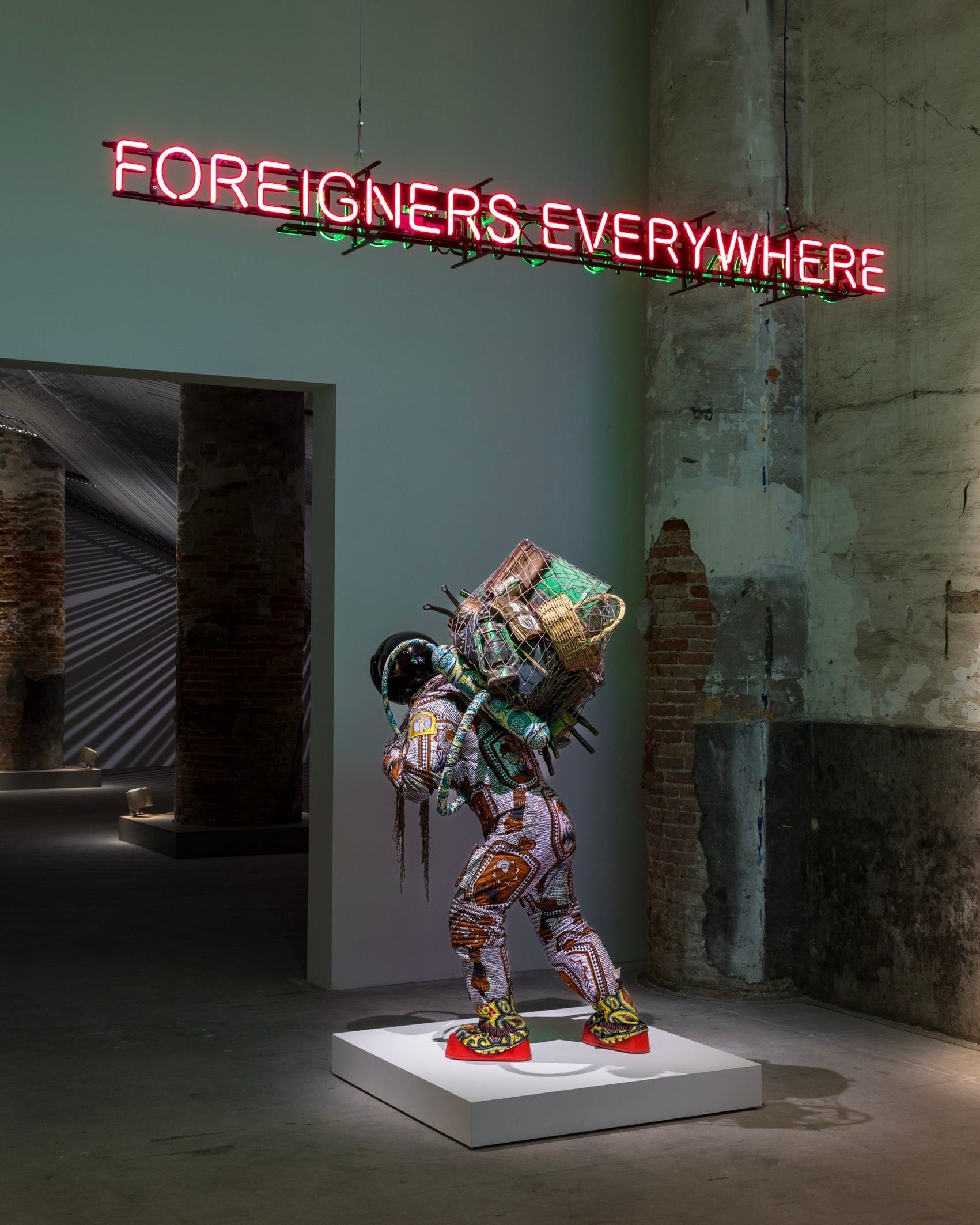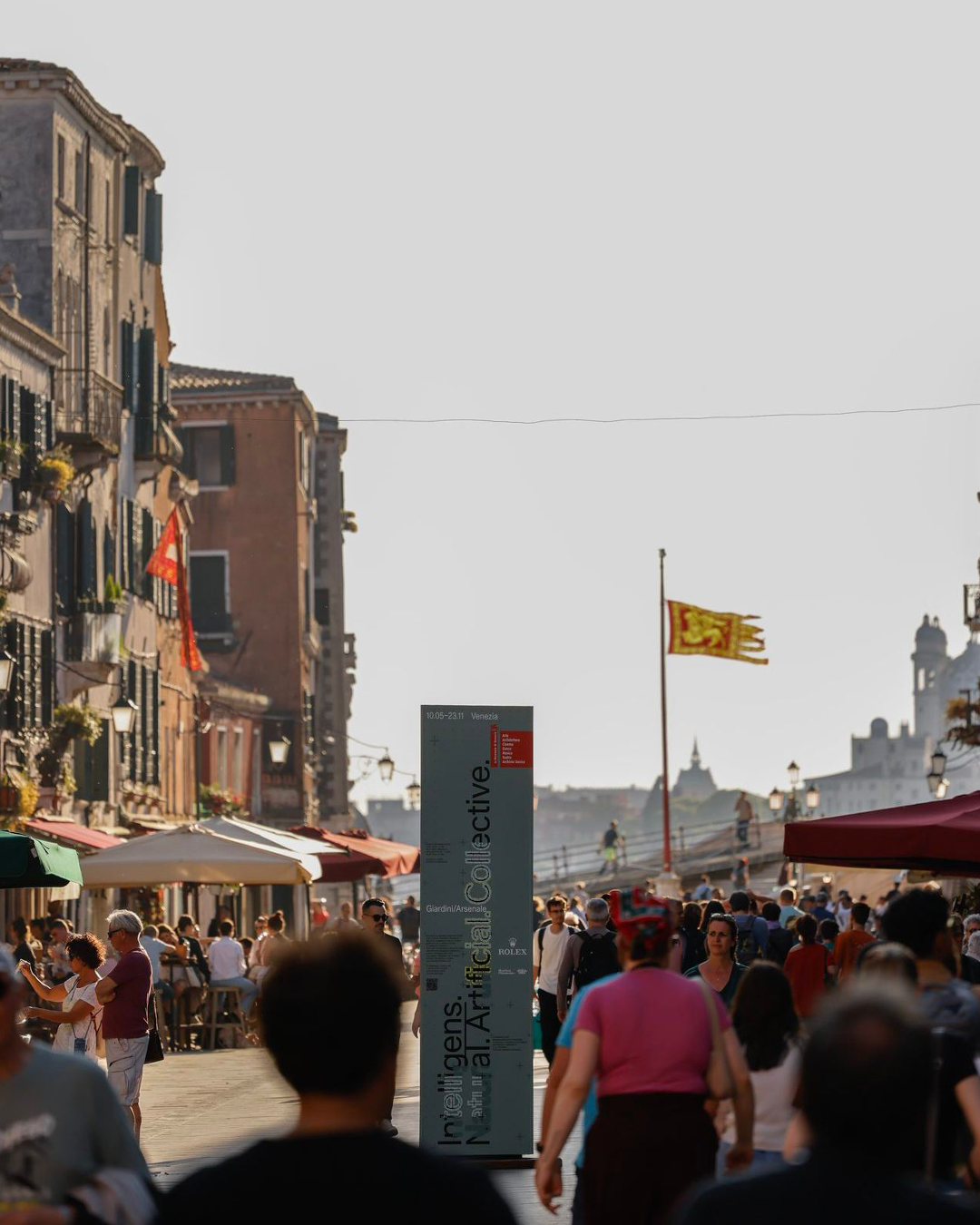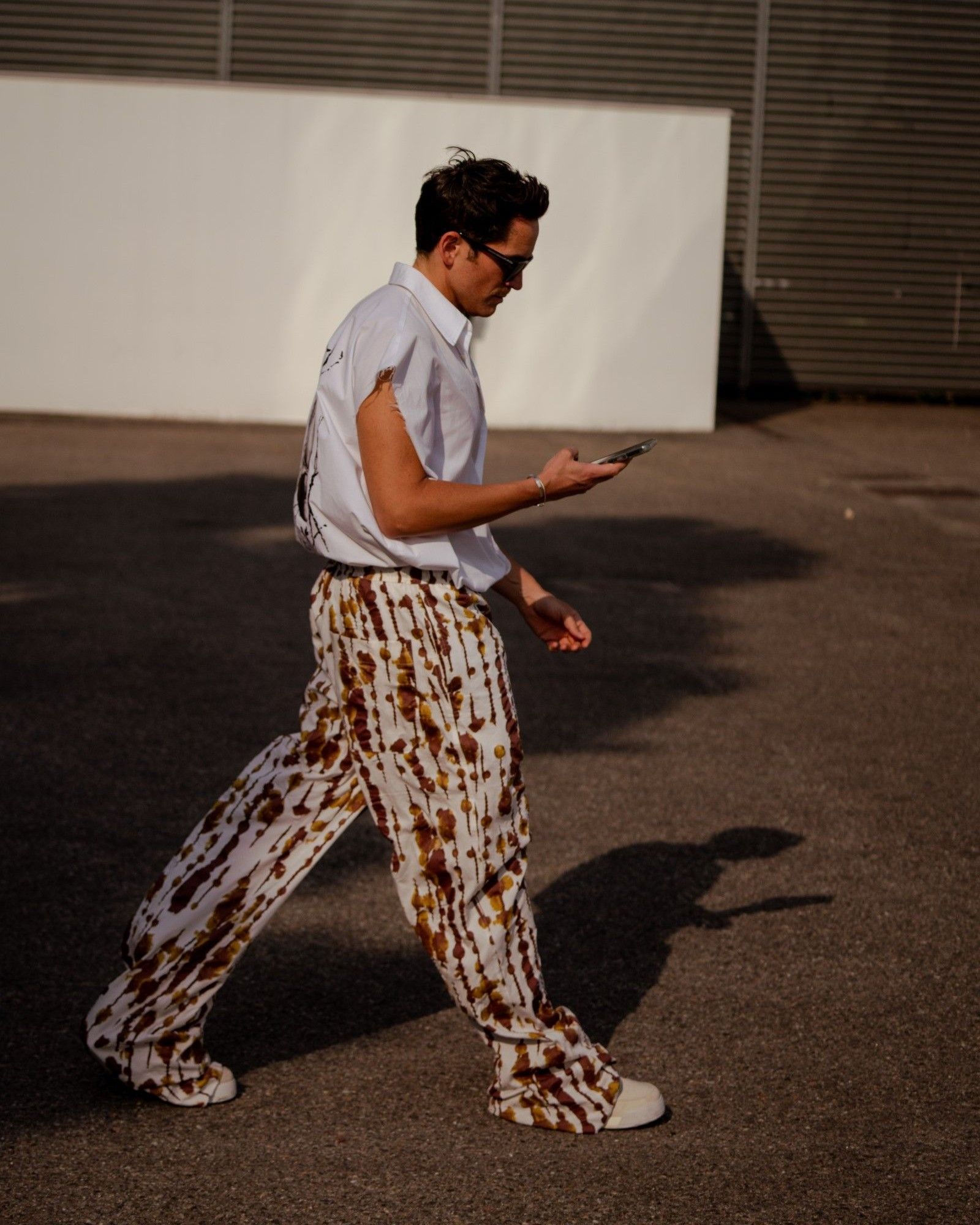
What to expect from the Venice Art Biennale 2024 The central concept of this edition is "Foreigners Everywhere"
The Venice Art Biennale, one of the most anticipated events in the art world, has returned with its 60th edition, promising a rich exploration of diversity and identity under the curatorial direction of Adriano Pedrosa. Entitled Stranieri Ovunque – Foreigners Everywhere, this year's exhibition invites visitors to delve into the complexities of being foreigners, both to others and to oneself. The Biennale will be open to the public from the Giardini and the Arsenale from April 20th to November 24th, 2024. This edition, following the principles of environmental sustainability initiated in 2021, aims to achieve carbon neutrality certification - a recognition already obtained in 2023 for all activities programmed by the Biennale, including the International Exhibition of Cinematographic Art, the Theater, Music, and Dance Festivals, and, most importantly, the International Architecture Exhibition. The pre-opening of the Biennale will take place on April 17th, 18th, and 19th, the same days as Design Week, followed by the award ceremony and inauguration on April 20th, 2024. This commitment to sustainability integrates with the theme of decolonization and decarbonization, reflected also in the artworks exhibited during the event from 90 countries with 332 artists on display. But how will the edition starting in these days be organized?
The two areas of the Venice Art Biennale 2024
For the first time, the exhibition is divided into two distinct parts: the "Contemporary Nucleus," which presents contemporary artists, and the "Historical Nucleus," which exhibits 20th-century works from around the world. This division allows visitors to conduct a comprehensive examination of the boundaries and definitions of modernism, challenging the Eurocentric narratives that have often dominated art history. Prominent artists such as Anna Maria Maiolino and Nil Yalter, both recipients of the Golden Lion for Lifetime Achievement, enrich the exhibition with their revolutionary works. Maiolino presents a new large-scale clay work, while Yalter offers a new version of her installation Exile Is a Hard Job along with her mobile home titled Topak Ev. Additionally, indigenous collectives like MAHKU from Brazil and MATAAHO from New Zealand bring their unique perspectives to the forefront, enriching the dialogue on cultural diversity and representation. A special section curated by Marco Scotini, titled Disobedience Archive, explores the intersection between artistic practices and activism. Through films and videos, 39 artists shed light on issues ranging from diaspora to gender disobedience, emphasizing the transformative power of art in promoting social change.
The Venice biennale is MY coachella
— kai sholmes 100 dyingotters (@solarotters) April 15, 2024
The "Historical Nucleus" offers a curated journey through 20th-century art from Latin America, Africa, Asia, and the Arab world, challenging traditional narratives of European Modernism. Works by artists from diverse regions serve as testimonies to global exchanges of ideas and influences, transcending geographical boundaries. The section includes a room dedicated to portraits, abstractions, and a reflection on the diaspora of Italian artists, providing insights into the multifaceted nature of artistic expression. Textiles emerge as a recurring motif in the exhibition, showcasing artists' interest in craftsmanship, tradition, and handmade techniques. From Chile to Morocco, artists explore the cultural significance of textiles, celebrating techniques once considered foreign or alien in the art world. Notable textile works include those by Bordadoras de Isla Negra, Bouchra Khalili, Dana Awartani, and Frieda Toranzo-Jaeger, among others. Another significant theme is the transmission of knowledge and practices within families, especially among indigenous artists. Artists like Andrés Curruchich and Fred Graham, along with their descendants, represent the intergenerational continuity of artistic expression and cultural heritage.
Countries involved in the Venice Art Biennale 2024
@resnicowculture The 2024 U.S. Pavilion at the Venice Biennale is officially open! Presenting “the space in which to place me” by Choctaw Cherokee artist Jeffrey Gibson. The 2024 US Pavilion is presented by Portland Art Museum (@Portland Art Museum Great Things - Deeper Soaking Worship
The Exhibition will be enriched by a total of 88 National Participations in the Pavilions at the Giardini, the Arsenale, and the historic heart of Venice. This year, four new additions to the Biennale Arte stage are announced: the Republic of Benin, Ethiopia, the Democratic Republic of Timor Leste, and the United Republic of Tanzania. Additionally, Nicaragua, the Republic of Panama, and Senegal make their debut with their own pavilion. The Italian Pavilion, located in the Tese delle Vergini in the Arsenale and supported by the General Directorate of Contemporary Creativity of the Ministry of Culture, is curated by Luca Cerizza. It features the evocative project Due qui/To hear by artist Massimo Bartolini, accompanied by special contributions from musicians and writers. There will also be the Holy See Pavilion moving this year to the Venice Women's Prison on the Giudecca with the exhibition With My Eyes, curated by Chiara Parisi and Bruno Racine, and the San Marino Pavilion exhibiting Eddie Martinez's Nomader project, curated by Alison M. Gingeras at the Fucina del Futuro. Finally, the Municipality of Venice contributes with the Venice Pavilion, located in the Gardens of Sant’Elena, adding further colors and nuances to this rich artistic mosaic.
Collateral events and special exhibitions
In addition to the already enormous Biennale, a lively framework of collateral events will enrich the city's cultural landscape. Among the Special Projects realized by the Venice Biennale, stands out the exhibition of works by Italian artist Nedda Guidi in the evocative setting of the Austrian Powder Magazine, in the Forte Marghera of Mestre where ten selected works will be exhibited that testify to Guidi's creative genius in the field of ceramic sculpture. In the Pavilion of Applied Arts of the Arsenale, always curated by Adriano Pedrosa in collaboration with the Victoria and Albert Museum in London, the work of Brazilian artist Beatriz Milhazes will be celebrated with seven paintings and as many collages that blend Brazilian cultural imagery and Western modernist painting. There will also be the Biennale College Arte which will promote emerging talents with the presentation of the finalists' projects of the 2nd edition: Agnes Questionmark, Joyce Joumaa, Sandra Poulson, and Nazira Karimi, among over 150 young artists from all over the world, will receive financial support for the realization of their works which will be exhibited during the 60th International Exhibition. Finally, the award ceremony of the Venice Art Biennale 2024 will be enriched by the assignment of the prestigious Golden Lions for Career Achievement to Anna Maria Maiolino, a Brazilian artist of Italian origin, and to Nil Yalter, a Turkish artist residing in Paris. A well-deserved recognition for their extraordinary contribution to the contemporary artistic panorama, confirmed by their lasting influence in the art world.
The Biennale Catalogue
The catalogue of the Venice Biennale 2024 is an essential resource to explore in-depth the wide range of works on display and is composed of two volumes, curated by the team of Estudio Campo from São Paulo, Brazil. Volume I of the catalogue, dedicated to the International Exhibition curated by Adriano Pedrosa, includes opening articles by President Pietrangelo Buttafuoco and President Roberto Cicutto, followed by an in-depth interview with the curator himself conducted by Julieta Gonzàles. It also includes critical essays and exclusive interviews with the recipients of the Golden Lion for Lifetime Achievement, Anna Maria Maiolino, and Nil Yalter. Each artist on display is presented with a detailed critical text and a rich iconographic apparatus, divided between the two main sections of the exhibition: the Historical Nucleus and the Contemporary Nucleus. Volume II focuses on the National Participations and collateral events, offering a comprehensive overview of the works exhibited in the various national pavilions and venues scattered throughout the city of Venice and at Forte Marghera in Mestre. Finally, the Exhibition Guide, included in the volumes, is designed to accompany visitors along the exhibition route, offering practical information and insights on each stage of the Venice Art Biennale 2024.















































